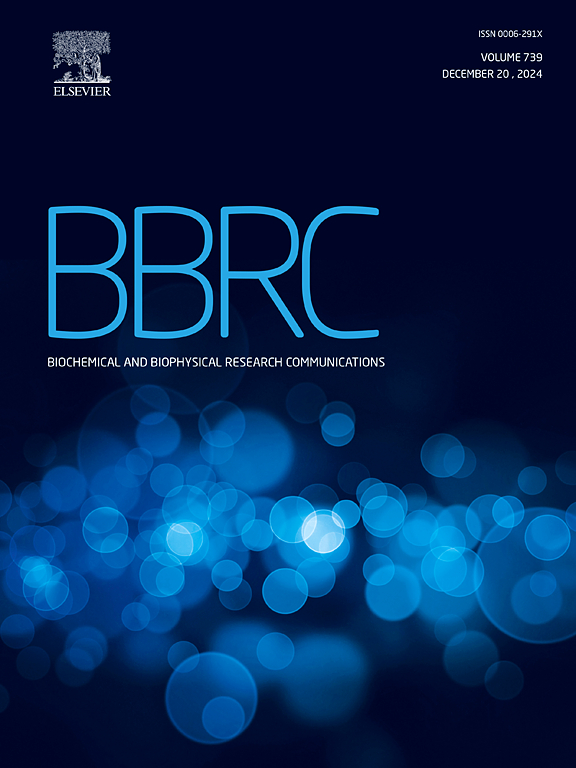Evaluation of peroxidase mimicking behaviour of V2O5 nanozymes with various morphologies and its application as glucose sensor via cascade mechanism in human serum samples
IF 2.5
3区 生物学
Q3 BIOCHEMISTRY & MOLECULAR BIOLOGY
Biochemical and biophysical research communications
Pub Date : 2025-04-04
DOI:10.1016/j.bbrc.2025.151758
引用次数: 0
Abstract
A simple spectrophotometric method is presented for quantifying glucose and H2O2 using p-aminophenol sulfate-(PAP) & N-(1-Naphthyl) ethylenediamine dihydrochloride-(NEDA) as novel chromogenic reagents with different morphological V2O5 nanoparticles (NPs) as peroxidase mimicking nanozyme. For glucose, the method was linear in the range of 0.0289 and 0.925 mM for HRP and NPs. The substrate and nanozymes interaction was established using Km values, which were satisfactory. Recovery studies were performed with glucose and found between 83.98 % and 99.08 % for NPs and 88.48 to 99.35 for HRP. LOD range of 0.0194–0.0351 mM and LOQ range of 0.0588–0.1064 mM was observed with NPs, whereas for HRP, LOD was 0.02 and LOQ was 0.0607 mM. Maltose, sucrose, fructose, mannose, and galactose, considered potential interferants in glucose assay methods, provided negligible interference with the proposed method. Based on XRD data, the average crystalline size of the NPs was calculated using Scherrer's equation and Williamson-Hall plot and ranged between 29.14 and 45.42 nm, 32.5 and 45.7 nm, respectively. SEM and TEM images confirm the morphology of V2O5 Nps were vanadium nanosheets (VNShs), nanoflowers (VNFws), and nanospheres (VNSps). DLS data revealed the Zeta potential of NPs in the range −4.5mv to 4.6mv. XPS confirms the NPs are in the V2O5 state.

不同形态V2O5纳米酶模拟过氧化物酶行为的评价及其作为葡萄糖传感器在人血清样品中的级联应用
提出了一种简单的用对氨基酚硫酸盐(PAP)分光光度法定量葡萄糖和H2O2的方法。N-(1-萘基)乙二胺二盐酸-(NEDA)作为新型显色试剂,以不同形态的V2O5纳米粒子(NPs)作为过氧化物酶模拟纳米酶。对于葡萄糖,HRP和NPs在0.0289和0.925 mM范围内呈线性。利用Km值确定了底物与纳米酶的相互作用,结果令人满意。用葡萄糖进行恢复研究,发现NPs的回收率为83.98%至99.08%,HRP的回收率为88.48至99.35%。NPs的LOD范围为0.0194-0.0351 mM, LOQ范围为0.0588-0.1064 mM,而HRP的LOD范围为0.02 mM, LOQ为0.0607 mM。麦芽糖、蔗糖、果糖、甘露糖和半乳糖被认为是葡萄糖检测方法中的潜在干扰物,对该方法的干扰可以忽略。基于XRD数据,利用Scherrer方程和Williamson-Hall图计算了NPs的平均晶粒尺寸,分别为29.14 ~ 45.42 nm、32.5 ~ 45.7 nm。SEM和TEM图像证实了V2O5 Nps的形貌为钒纳米片(VNShs)、纳米花(VNFws)和纳米球(VNSps)。DLS数据显示NPs的Zeta电位在- 4.5mv ~ 4.6mv范围内。XPS确认NPs处于V2O5状态。
本文章由计算机程序翻译,如有差异,请以英文原文为准。
求助全文
约1分钟内获得全文
求助全文
来源期刊
CiteScore
6.10
自引率
0.00%
发文量
1400
审稿时长
14 days
期刊介绍:
Biochemical and Biophysical Research Communications is the premier international journal devoted to the very rapid dissemination of timely and significant experimental results in diverse fields of biological research. The development of the "Breakthroughs and Views" section brings the minireview format to the journal, and issues often contain collections of special interest manuscripts. BBRC is published weekly (52 issues/year).Research Areas now include: Biochemistry; biophysics; cell biology; developmental biology; immunology
; molecular biology; neurobiology; plant biology and proteomics

 求助内容:
求助内容: 应助结果提醒方式:
应助结果提醒方式:


